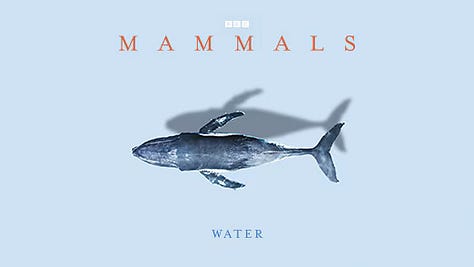Ensuring you use language for humans, not just men
Avoiding gender-biased language, a new way to edit video, an example of great minimalist design, and a factual storytelling job alert
One of the biggest mistakes any communicator can make is offending their audience. And one of the most common ways that happens, is by intentionally or otherwise using male-skewed language towards audience members who identify otherwise.
Here are some excellent tips on how to avoid doing just that.
This isn’t our advice. It’s taken from the book Communicating in the 21st Century, 4th edition by Baden Eunson, based at Monash University, Australia, which you can purchase via the publisher Wiley here, or direct on Amazon here.
In Chapter 7, Gender and Communication, Eunson highlights more than 10 techniques you can use to ensure your language is gender neutral, in Eunson’s words: “ensuring we have a language for humans, not just men.”
For example, let’s consider the following, but commonly used male-skewed version of the sentence:
A manager needs to know what his project budget is going to be.
Instead of crafting this sentence this way, Eunson recommends considering doing the following:
Use a pair of pronouns
A manager needs to know what his or her budget is going to be.
Use the slash/combined form
A manager needs to know what his/her project budget is going to be.
Recast the sentence to omit the gender-specific pronoun/s
A manager needs to know what the project budget is going to be.
Replace third person pronouns
A manager needs to know what their project budget is going to be.
Use plurals
Managers need to know what their project budget is going to be.
Other tips include reworking gender-skewed sentences, such as:
He or she can determine the project’s budget.
And instead use the imperative mood of verbs:
Determine the project’s budget.
Replace third-person pronouns with second-person pronouns:
You can determine the project’s budget.
and
Change if . . . when clauses to on/upon phrases, or modifiers without expressed subjects, for example, altering the sentence:
When the manager has completed this budget, he should have the spreadsheet approved by his senior executive.
To:
Upon completing this budget, the manager should have the spreadsheet approved by a senior executive.
Using gender inappropriate language is not the only way that communication often fails to be effective because the sender of any message fails to properly account for their audience.
One of our key pieces of advice is:
‘Consider the impact you want your story to have and how you want your audience to react, before you publish your content.’
Another is:
‘The act of storytelling is less about how well a story is told, and more about well it is received.’
And yet another:
‘Storytellers can make serious mistakes when they forget or misjudge the cultural or professional expectations of their audiences.’
Make sure whenever you communicate your work, be respectful of your audience, and their expectations. When it comes to factual storytelling, if in doubt, use a neutral, inclusive voice.
We have a whole module covering this called Know Who You Are Talking To’, which includes the following pertinent lessons:
Learn to Listen to Your Audience
A new way to edit video
Well that’s the claim at least of Descript, an online video and podcasting tool that also helps with recording and transcribing videos and podcasts over the internet. Oh, and it can also supply AI-generated voice-overs if you need them.
Many factual storytellers aren’t skilled in video or audio production, so Descript’s features may come in handy. The software automatically transcribes recordings so you can edit them like a documentary. Then ‘you can arrange visuals like you would on a slide’ according to Descript’s website.
The product also promises to help improve poor sound quality of online recordings.
And it includes a very useful eye-contact feature, that uses AI to correct the view of people speaking to screen. In basic terms, this ensures the subject that is speaking online to you is always looking at the camera, which is very useful when recording interviews with inexperienced subjects.
Plans range from free, to Pro at $288 a month, with an Enterprise level above that.
We don’t yet use Descript, so have no skin in the game. But we do like to highlight new factual storytelling tools that may benefit individuals and organisations. And this may be one of them.
Minimalism and negative space
Time for another reminder about the power of good design in factual storytelling.
Check out these images used to promote and celebrate the new BBC natural history documentary Mammals, produced by BBC Studios.






Note the exceptional use of a minimalistic design, and crucially the use of negative space that focuses attention on the subject of each poster.
The creative dual-view, seeing the animal from the side, and above.
And the great colour palette, with hues suggestive of each animal’s environment, that are in contrast to each other.
To develop your and your team’s design skills, sign up to our Factual Storytelling Course, which includes the module ‘Good Design And Why It Matters’.
Job alert
The incredibly worthwhile charity Macmillan Cancer Support is recruiting for a Senior Communications Manager, specialising in Stories and Voices.
See the job ad here on LinkedIn.
It’s a 12 month position, split between home-working and the organisation’s London office.
The advert description is as follows:
“We are looking for a senior manager to lead our team of six people responsible for both engaging with people affected by cancer who want to share their stories, and with celebrities and influencers looking to support our cause.”
“We are looking for someone with relationship-building skills and a background in leading strategies to engage ambassadors, celebrities and/or people with lived experience who want to share their stories publicly.”
Hurry, as the application deadline is next week: 16 April 2024.




